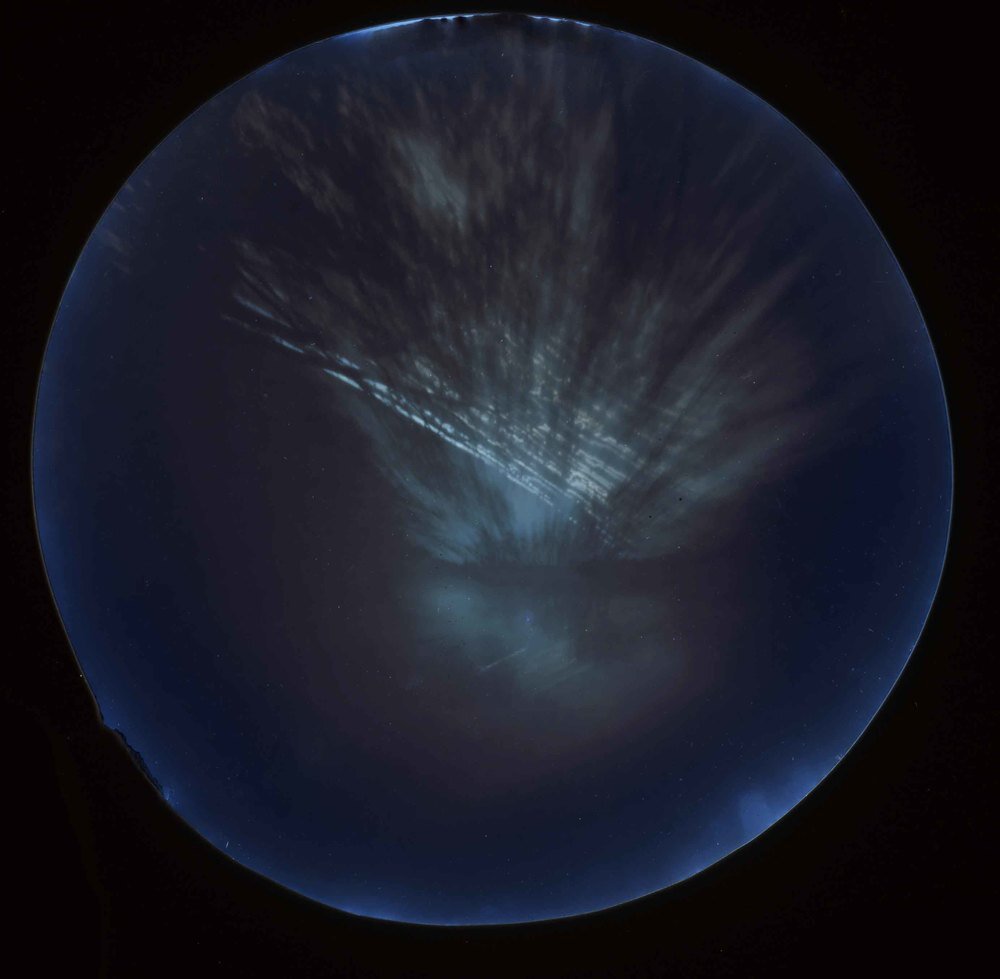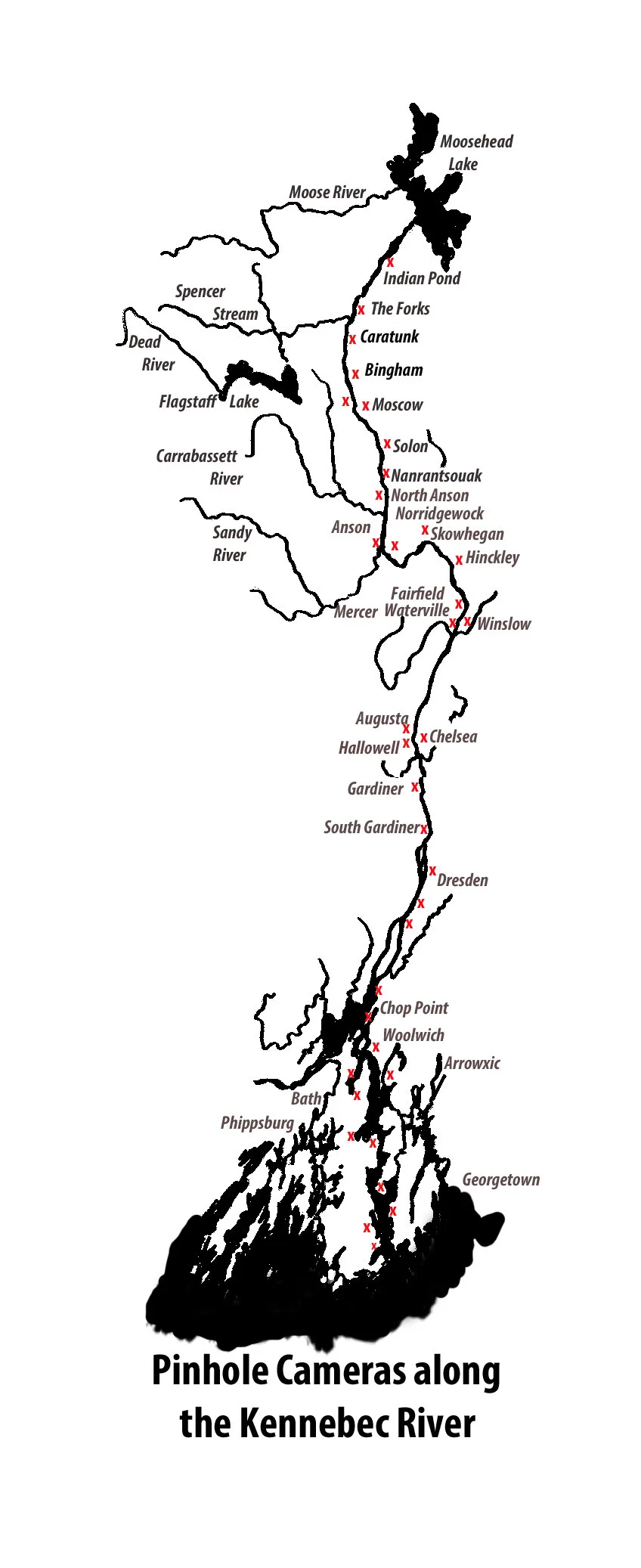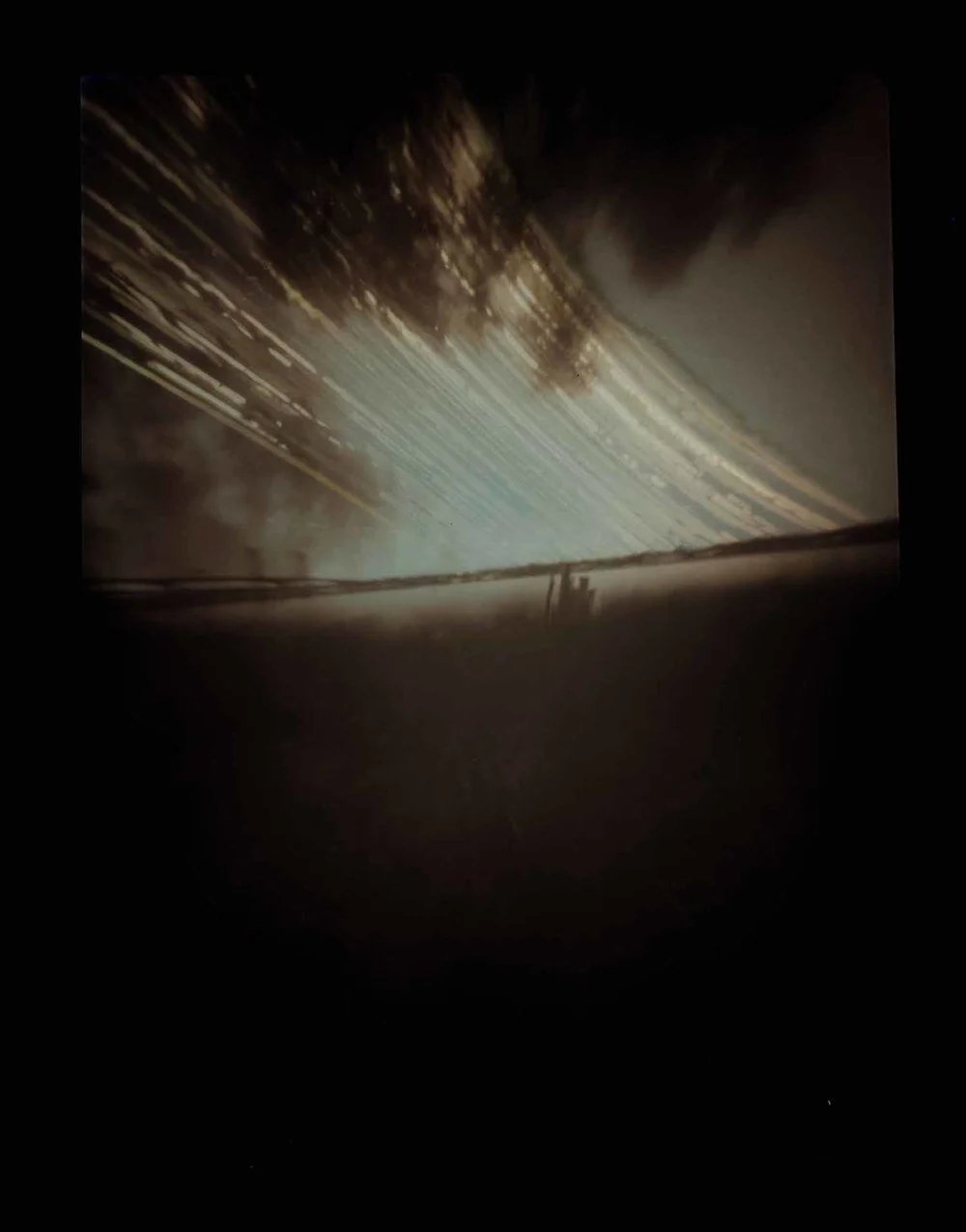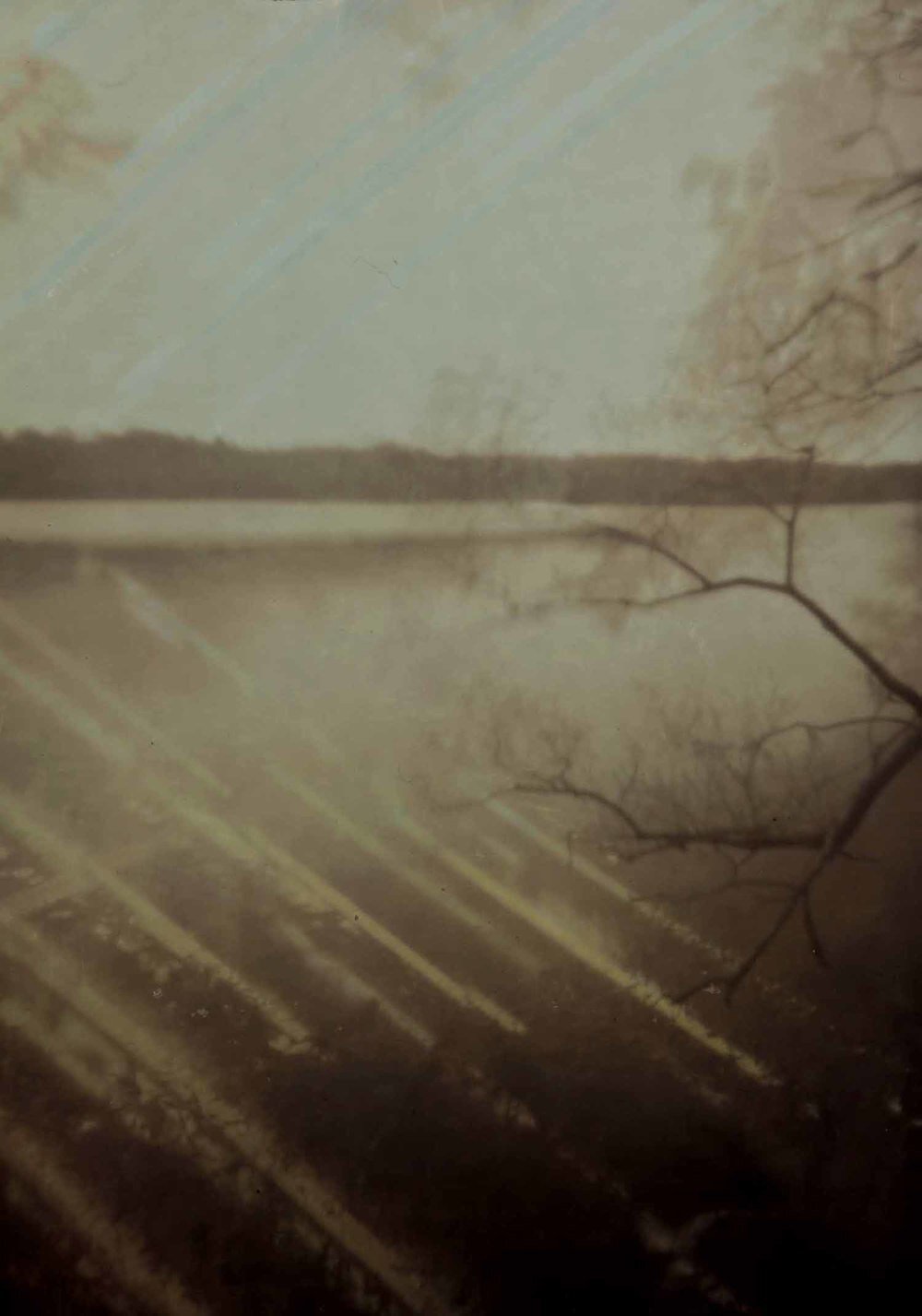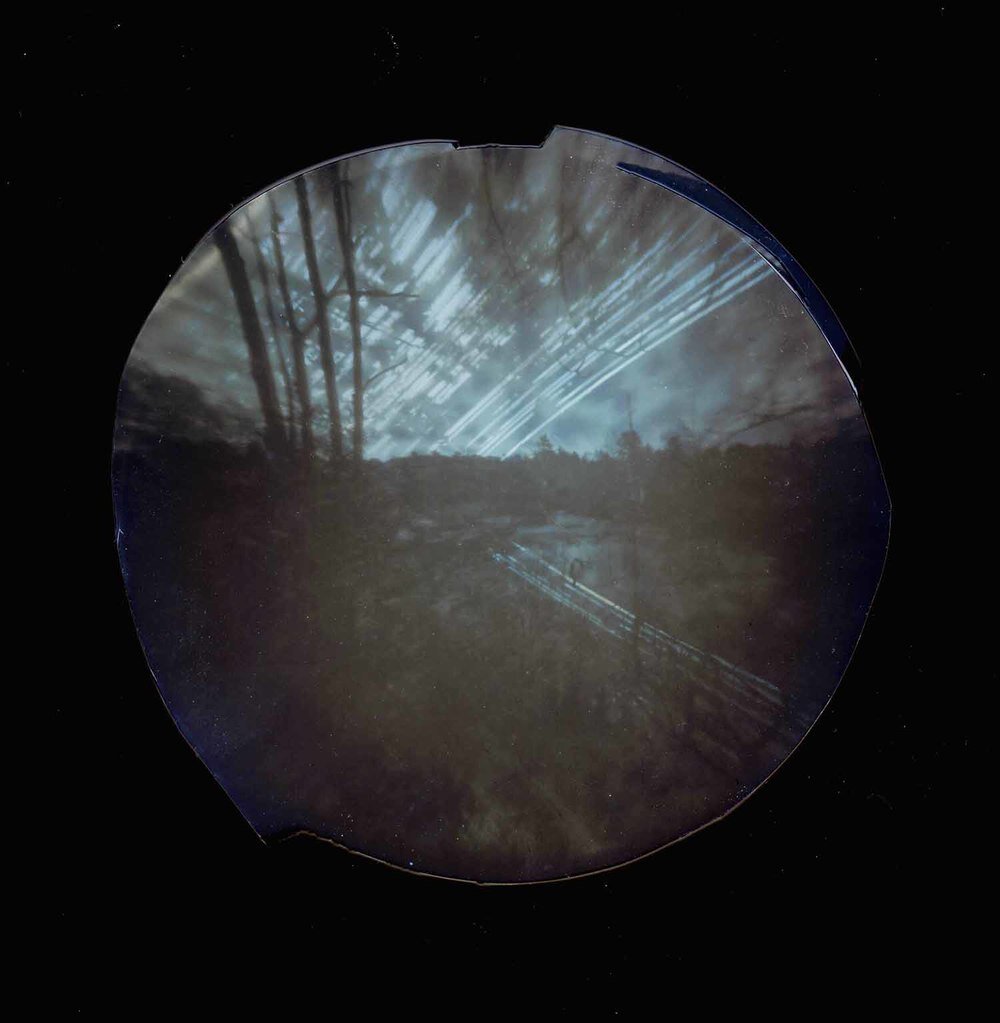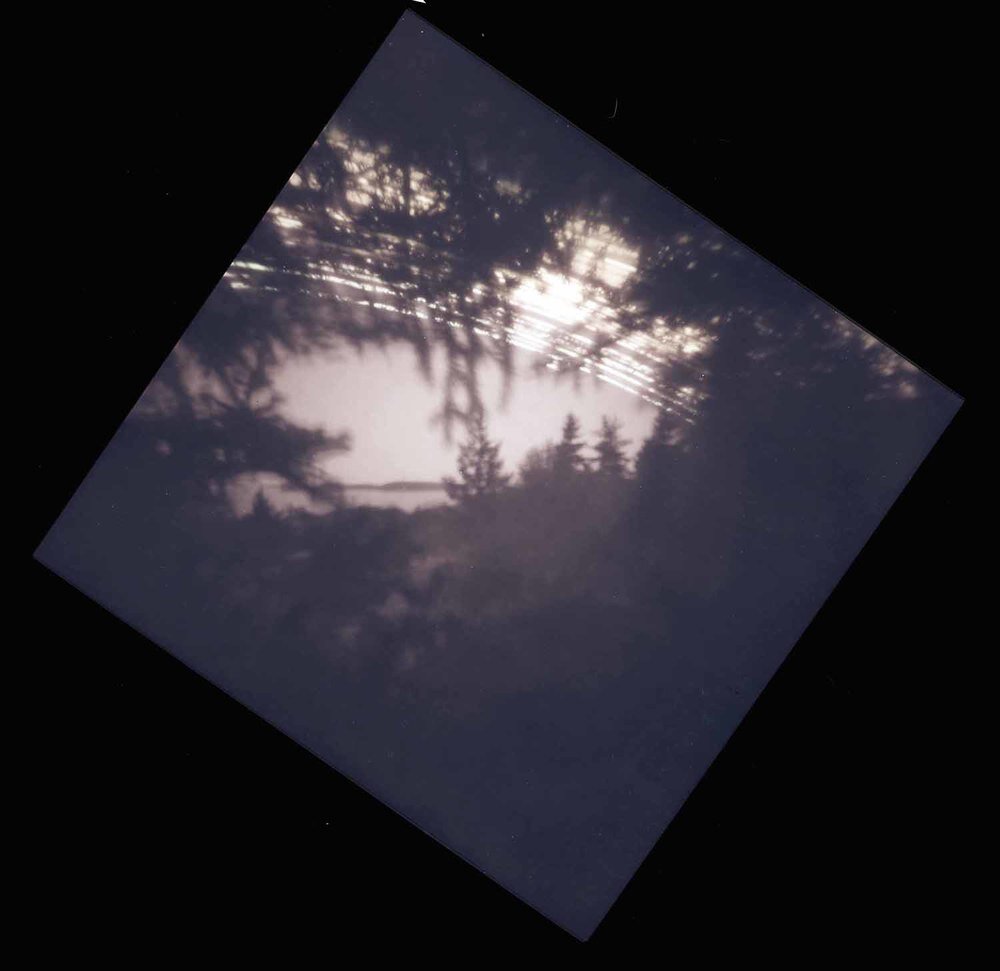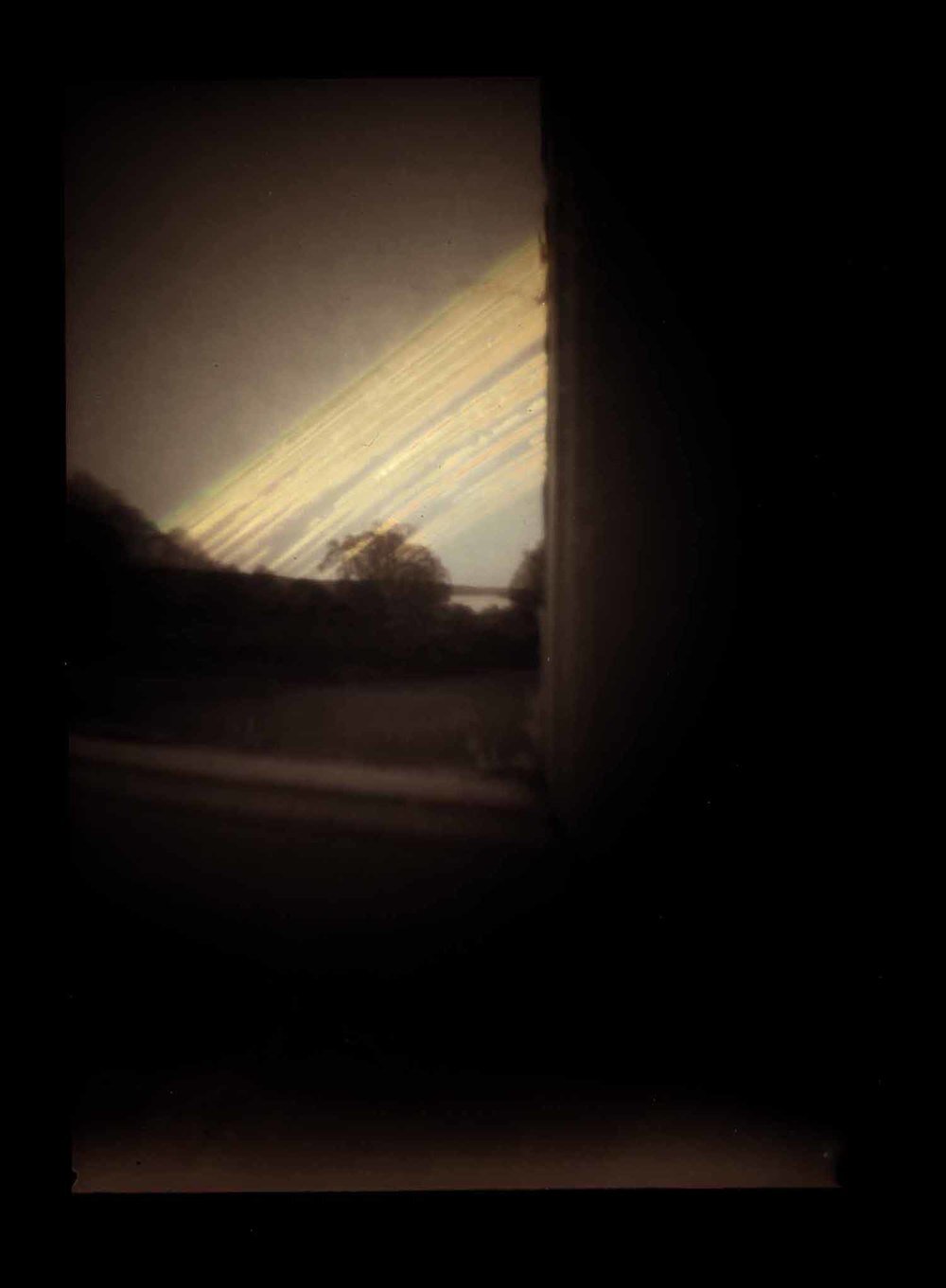Johanna Moore 2015
Diary of a River: Solargraphs of the Kennebec River
January 22– May 29, 2015
Opening Reception: January 22, (Thursday) 6-8 pm
Artist Conversation: April 9, (Thursday) 6-8 pm
This exhibition is part of the Maine Photo Project (mainephotoproject.org), a statewide photography collaboration in 2015. The Maine Photo Project is organized and supported by the institutions of the Maine Curators' Forum and is generously sponsored by the Bates College Museum of Art, the Bowdoin College Museum of Art, and the Colby College Museum of Art, with fiscal management provided by the Maine Historical Society. The Maine Photo Project is funded in part by a grant from the Maine Arts Commission, an independent state agency supported by the National Endowment for the Arts.
Solargraphs are long exposure images made with a pinhole camera. For this exhibit I produced images within a six month time frame between the summer and winter solstices (June 21-December 21, 2014). I built 120 pinhole cameras and, starting June 21, with my husband David Keef, we set them out along the Kennebec River and several of its tributaries, from historic sites to river dams, from Indian Pond to Phippsburg. These pinhole cameras captured the sun as it crossed the sky.
I live and work along the Kennebec River. The river and its history has been a source of learning and inspiration for over 25 years. This project pays homage to the river and the vitality it and all its tributaries provide while creating a visual diary of the light that shines along its course.
www.mainephotoproject.org
River Road, Madison, 129 Days, Solargraph, 10" x 10", 2014
Chance, Change and Chiaroscuro:
Johanna Moore’s Kennebec
In Johanna Moore’s solargraphs, produced with pinhole cameras set along the length of the Kennebec River, the sun inscribes lines of light across the sky. Sometimes these lines recall the aurora borealis, at others, the contrails of jets. They also might be the marks of some creature clawing the icy heavens.
These photographs represent motion—we are watching the world and its weathers revolve from solstice to solstice. Sometimes there are streaks of sunlight in the surface of the river; in others, trees appear on the verge of blocking out the view. The bridge in Bath might be an ancient monument on the tilting horizon while more remote areas have the look of primeval wilderness.
Chance plays a significant role here; while Moore strategically placed the cameras, she didn’t know exactly what they would record. As Lyle Rexer notes in Photography’s Antiquarian Avant-Garde: The New Wave in Old Processes (2002), pinhole images are “as much a record of the process of making a photograph as they are a representation of reality.” Therein, one might argue, lies their special appeal: One of the simplest photographic techniques is used to capture the passage of light in a landscape.
Moore’s aesthetic harks back to the Pictorialist photographers of the early 20th century who sought to produce images that called attention to the artistic qualities of photography.* While she accomplishes this goal—these pinhole photos are haunting in their eerie lambent tones—her purpose reaches far beyond the artistic. By way of this visual diary Moore hopes to raise awareness of the role that the Kennebec River plays in the “common good” of the communities that draw from it.
In this year of the Maine Photo Project, we will be viewing the work of a wide range of camera artists committed to conveying a vision of the world. Moore’s “Diary of a River” represents an excellent opening act, evoking the history of photography even as it touches on completely contemporary concerns.
Carl Little’s most recent book is Irene Hardwicke Olivieri: Closer to Wildness. He lives and writes on Mount Desert Island.
*Curious to note that three major representatives of that school, F. Holland Day, Clarence H. White and Gertrude Käsebier, worked around Georgetown Island, part of Moore’s territory.” See Susan Danly and Libby Bischof, Maine Moderns: Art in Seguinland, 1900-1940 (2011).
This exhibition/program is part of the Maine Photo Project (mainephotoproject.org), a statewide photography collaboration in 2015.

